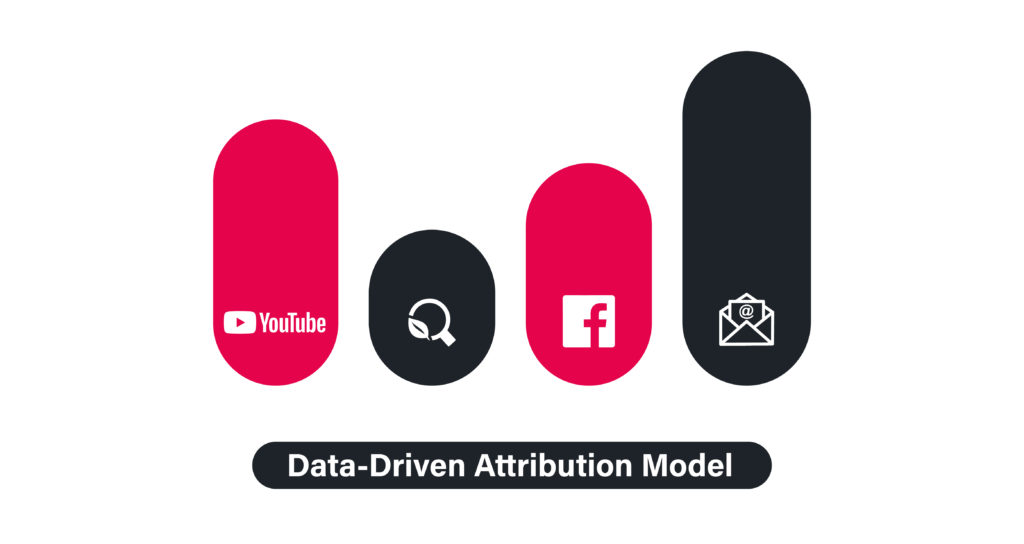This time last year, we published a blog explaining the importance of setting up your GA4 property and tracking data sooner rather than later, enabling you to compare apples to apples, not apples to oranges. The advancement of Analytics, although exciting, has been a daunting one and to be completely honest, we can’t believe the switchover is nearly upon us. Where has the time gone?
Counting down the minutes until we lose Universal Analytics (UA) for good, and we put all our eggs in GA4’s basket, you may feel on tenterhooks. (We can’t blame you.) But don’t fret. We’re here to reassure you about the new interface, how to use it and what to be aware of.
What changes have we seen in GA4 over the past 12 months?
GA4 is an ever-evolving product, and boy have there been a lot of new releases and updates over the last year – 42 to be exact! Here are some of the biggest releases we’ve recorded
Data attribution models
In April 2023, Google announced that the sun would be setting on the following attribution models:
- First-click – The conversion is attributed to the first channel that the converting user interacted with.
- Linear – The conversion is split evenly across all channels the user interacted with.
- Time decay – The conversion split amount ascends throughout the user’s journey e.g. the last interaction in the journey will be given a larger chunk of the conversion split compared to the first interaction.
- Position-based – Similar to linear, the conversion is split between all channels in the user’s journey, the difference being that the first and last interactions are given the bigger chunk of the conversion whilst the rest is split evenly across the channels in between.
As of May 2023, new properties won’t have the option to select these attribution models, and existing properties will lose the ability to use these attribution models from September 2023. Are you still with us? Good, there’s more.
Going forward, there will only be two options (for now at least), these being data-driven and rules-based:
- Data-driven attribution aims to provide a fair and more accurate analysis of which channels contributed towards a conversion. Similar to the linear and position-based models, it works to split the credit between all channels involved. In this case, Google determines which channel played a bigger part in the conversion journey compared to others and gives a larger percentage to those channels that played a bigger role in getting the user to convert. You might be asking, how does Google work this out? Well, in their About attribution and attribution modelling article, Google states, ‘The model incorporates factors such as time from conversion, device type, number of ad interactions, the order of ad exposure, and the type of creative assets… the model contrasts what happened with what could have occurred to determine which touchpoints are most likely to drive conversions.’ For example, you can see in the image below that email marketing has been given the biggest split of the conversion, followed by paid video advertising, paid Facebook advertising, and lastly, organic search.

- Rules-based attribution is a rule or set of rules that decides how conversion credit should be distributed between the different channels interacted with. You have cross-channel last click which will assign the conversion to the last touchpoint. (Note: this model ignores direct visits, so if the last step in a user’s journey was via direct, the conversion would be given to the last channel before the direct visit, unless their whole journey consists of direct visits.) Or, ads-preferred last click which assigns all conversions where the last interaction was a paid visit to the paid channel.
Ecommerce tracking
This was one of the last areas of the tool to be developed and has come a long way since last year. For a short period, we were suffering from a case of squeaky bum time waiting for guidance from Google themselves on how best to implement ecommerce tracking and use the monetisation reports. Turns out, we didn’t have to wait too long and have since discovered that in terms of its setup with Google Tag Manager (GTM) it’s virtually the same as it was with UA. It’s the creation of the data layer that is slightly different. You will need to make sure the GA4 version of schemas have been added to your data layer in order to track purchases and refunds, and pull product information through to GA4. Throughout the last few months, you’ve been able to have these run alongside the UA schema, enabling ecommerce tracking to pull through to both properties. A developer will be able to help you with this. If you don’t have access to a developer, drop us a message today and we’ll be happy to help you get ecommerce tracking underway.
Personalise your GA4 interface and reports
One of the biggest benefits from a data analyst’s perspective is the ability to now tailor the data and information you are shown. You can set up reports that pull through data that is unique to your business and choose to see, at a quick glance, the most important bits whilst filtering out the rest, some of which with UA, was default and potentially irrelevant within a certain context. For example, as of December 2022, you’ve been able to personalise your GA4 homepage, almost like a dashboard, using the metric dropdowns in the overview cards, and you can customise individual reports to pull through the metric and dimension overviews that are important to you and your business.
There are many other developments and exciting features, but we won’t go ham. You can go through the entire list here.
What’s our FAVOURITE thing about the new interface?
If we’re being completely transparent, a common frustration with UA for a lot of our digital marketers has been the sheer amount of information in there. It can make finding an answer really overwhelming and more convoluted than it needs to be sometimes. So, with that being said, we’re biiiiiiiiiiiiiiiiig fans of the simpler display and navigation and the customisation of reports is music to our ears. Can you tell we’re a team of data nerds and strategy enthusiasts?
Want to know our honest opinion?
If GA4 does what it says on the tin, then we do believe this will be a needed step forward in data tracking… But watch this space, give us a few months down the line of exclusively using GA4 and we’ll have a better answer for you then. Fingers crossed.
What are our next steps?
Once July 1st has rolled round and we bid farewell to UA for good, these are our two most recommended next steps for everybody:
1. If you haven’t already, take a back up of any important historical data that you may want going forward from your UA property. Bear in mind that Google has made it clear that you will only be able to access this data for 6 months following the 1st July 2023, whereas previously they had stated that January 2024 is when they would completely remove all UA properties, this has since been amended as due to be announced.
2. Keep a close eye on traffic and conversion tracking over the next few months, particularly in channel group breakdowns. Be mindful that with the changes made to attribution models (as mentioned earlier), you may see drops/increases in conversion data for certain channels.
Whilst there is a considerable amount of information surrounding the new version of this tool that we haven’t been able to touch on in this blog, we hope that this covers some of the key changes we’ve seen in GA4 throughout the last 12 months and provides some idea of what your next steps should look like. Remember, we are all in this and learning together, you don’t need to feel alone.
Should you need any help with your GA4 set up or would like to work with a team who can put your GA4 account to good use by discovering new audiences, improving user journey, increasing conversion rate and providing clear and honest reporting, get in touch with our team today.
Or, if you’re just looking for someone to delve into the pros and cons of GA4 with, feel free to pop into our studio for a cuppa and a chat.
Stay curious. ✌️
